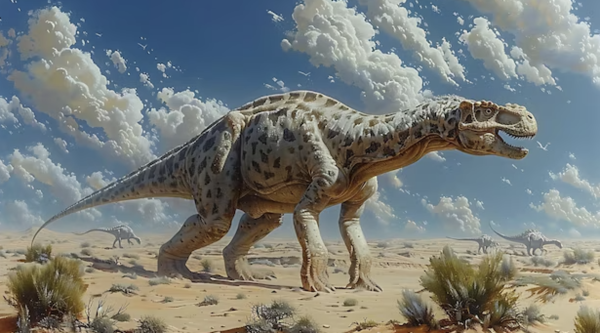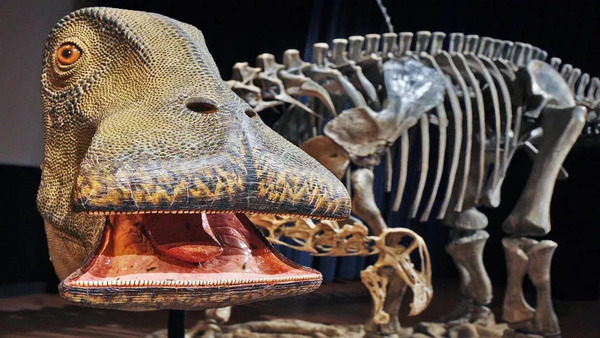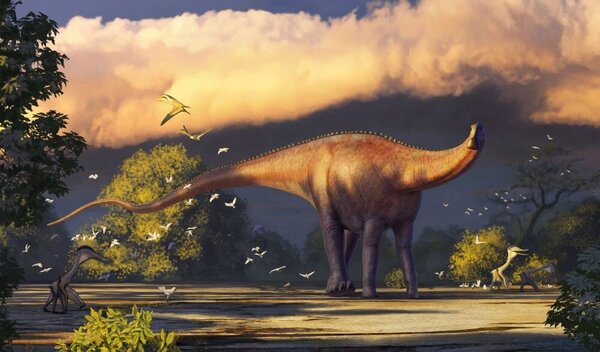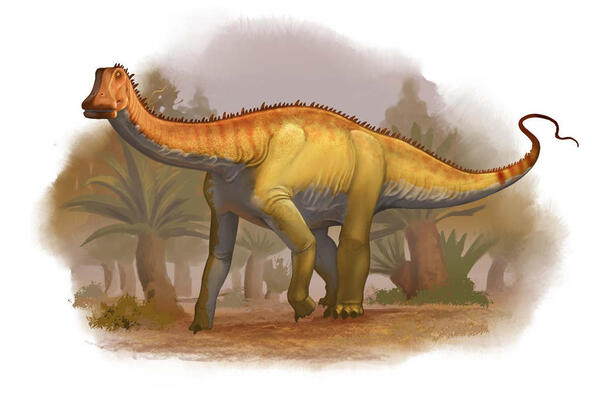If you've ever asked the question, "What animal has 500 teeth?" you’re not alone! This unusual query has become something of a curiosity, leading many people to search the web for an answer. The animal in question is none other than the Nigersaurus, an extinct dinosaur that lived during the middle of the Cretaceous period, around 115 to 105 million years ago.
In this article, we'll dive deeper into the Nigersaurus, explain why it had so many teeth, and explore its fascinating characteristics.

The Nigersaurus (pronounced "nee-ger-SAW-rus") was a member of the Rebbachisauridae family, which included plant-eating sauropods, typically known for their long necks and tails. Despite its name sounding unfamiliar to many, this dinosaur has gained popularity because of its extraordinary dental structure.
Unlike many dinosaurs, the Nigersaurus had a truly unique feature—over 500 teeth! But why did it need so many?
The Nigersaurus’ teeth were arranged in rows within its wide, shovel-like mouth, allowing it to graze efficiently on low-lying plants like ferns. Here's a closer look at why it had so many:
Constant Tooth Replacement: The Nigersaurus' teeth wore out quickly due to its plant-heavy diet. To compensate for the wear and tear, it had multiple rows of replacement teeth ready to take over. Its teeth were constantly being replaced—up to one tooth every 14 days!
Efficient Grazing: Its wide mouth and numerous teeth allowed it to quickly crop large amounts of vegetation. It likely grazed like a modern-day cow or a lawnmower, using its specialized teeth to clip through tough plant matter.
Adaptation for Survival: The sheer number of teeth was an evolutionary adaptation, helping it survive in an environment where finding enough food was crucial for its large body size.

While the 500 teeth are the main attraction, the Nigersaurus has several other fascinating characteristics:
Size: Despite being a sauropod, the Nigersaurus was relatively small compared to other dinosaurs in the same family. It grew up to about 30 feet (9 meters) in length, which is still impressive, but much smaller than giants like the Brachiosaurus.
Location: The Nigersaurus was first discovered in the country of Niger in Africa (hence its name) by French paleontologist Philippe Taquet in 1976. Fossils of this dinosaur have since been found in the Sahara Desert.
Skull Structure: Its skull was unusually light and delicate for a dinosaur, even translucent in some places, allowing paleontologists to see the inner workings of its bones.
Unique Mouth Shape: The Nigersaurus’ mouth was wide and flat, almost like a vacuum cleaner nozzle. Its teeth were all located at the front of its jaw, a feature that’s quite different from most other herbivorous dinosaurs.

Interestingly, the Nigersaurus’ fame didn’t just come from paleontologists and dinosaur enthusiasts. It gained internet popularity because of a joke that went viral, often humorously stating, "Don't Google 'what animal has 500 teeth.'" The mystery surrounding the large number of teeth led to curious searches, and the rest is history. However, there’s no real shock behind the answer—it’s just this fascinating, toothy dinosaur!
While the Nigersaurus holds the crown for an animal with 500 teeth, some modern animals also have an impressive number of teeth:
Sharks can have anywhere from 50 to over 300 teeth, and like the Nigersaurus, they frequently replace worn-out teeth throughout their lives.
Snails (depending on the species) can have thousands of tiny teeth on their radula, a tongue-like structure used for scraping food.
dolphins.html">Dolphins can have up to 100 teeth, and they use them to capture slippery prey like fish.
While none of these modern creatures match the Nigersaurus' count, they showcase the incredible diversity of teeth in the animal kingdom!

The next time someone asks, "What animal has 500 teeth?" you'll know the answer: the Nigersaurus, an ancient herbivorous dinosaur with a complex dental structure suited for its unique lifestyle. Though it’s long extinct, this fascinating creature continues to capture our imaginations with its remarkable set of teeth and unusual skull features.
So, the mystery is solved, and we now understand why this question has become such a hot topic online. If you're interested in more strange and fascinating facts from the animal kingdom (both extinct and living), keep exploring—you never know what other toothy wonders you might find!
When it comes to teeth, the animal kingdom has some truly fascinating examples. Some animals have evolved to have hundreds, even thousands, of teeth that serve specific purposes like catching prey, grazing, or self-defense. In this article, we’ll explore some of the most toothy creatures on Earth, ranked from those with the highest number of teeth downwards. You’ll be amazed at how nature has equipped these animals for survival through their unique dental structures!
At the top of our list are the humble snails. These small creatures might not seem like champions of the dental world, but they actually have more teeth than any other animal. A snail’s mouth contains a structure called the radula, which is covered with tiny, hook-like teeth. Depending on the species, snails can have anywhere from thousands to tens of thousands of teeth. These teeth are used to scrape food, such as algae, from surfaces.
Fun Fact: Snail teeth are arranged in rows and wear down quickly, but they’re constantly replaced.
Sharks are famous for their sharp, replaceable teeth. While a single shark doesn’t have thousands of teeth at once, it will grow and lose thousands throughout its lifetime. On average, a shark has around 50 to 300 teeth at any one time, but they regularly shed and regrow teeth, leading to an incredible total count that can reach 30,000 or more over a lifetime.
Sharks use their teeth primarily for hunting and tearing into their prey. Different species have different types of teeth adapted to their specific diets. For instance, great white sharks have serrated teeth for slicing through flesh, while nurse sharks have flatter teeth for crushing shellfish.
An ancient dinosaur with an unusual number of teeth, the Nigersaurus had around 500 teeth in its mouth, which it used to graze on low-lying plants. This dinosaur lived around 110 million years ago during the Cretaceous period and had a wide, flat mouth with rows of teeth designed for efficient grazing.
The Nigersaurus’ teeth were constantly replaced, similar to sharks, making it one of the most interesting examples of a "toothy creature" in prehistoric times.
dolphins.html">Dolphins are playful, intelligent creatures that have up to 100 teeth depending on the species. Unlike many toothy creatures, dolphins don’t chew their food. Instead, they use their teeth to grasp and catch prey, such as fish and squid, before swallowing it whole.
Interesting Insight: Dolphin teeth grow as they age, which allows researchers to estimate a dolphin’s age by counting the growth rings in its teeth—similar to how tree rings are counted.
Crocodiles are known for their fearsome, toothy grin, boasting between 60 and 110 sharp teeth. These large reptiles are apex predators, using their teeth to grab and hold onto prey. Like sharks, crocodiles frequently lose and regrow teeth throughout their lives, ensuring that they always have a functional set of teeth for hunting.
Fun Fact: Crocodiles have a special bite force that can crush bones, but their teeth are more suited for holding prey than cutting or chewing.
Surprisingly, giraffes, despite their long necks, only have 32 teeth, which is the same number as humans. However, giraffe teeth are located mostly at the back of their mouths, designed for grinding leaves from trees. Unlike most mammals, they don’t have upper front teeth, using their strong lips and tongue instead to pull foliage into their mouths.
Elephants have relatively fewer teeth, but they make up for it with their large size. Each elephant has 26 teeth in total: 12 molars and 12 premolars, plus two massive tusks, which are actually modified incisor teeth. Their molars are huge and can weigh up to 4.5 kg (10 lbs) each. These teeth are vital for grinding tough vegetation like bark and branches.
Humans might not seem like toothy creatures compared to others on this list, but we have 32 teeth, including four wisdom teeth that some people have removed. Our teeth are specialized for different purposes: incisors for cutting, canines for tearing, and molars for grinding food. Our dental structure is well-suited for a varied omnivorous diet.
Hippos are among the most dangerous animals in Africa, and their 38 to 40 teeth play a crucial role in that reputation. Although they’re herbivores, their canines and incisors can grow up to 50 cm (20 inches) long and are used primarily for defense and fighting rather than feeding. The hippo's molars, however, are adapted for grinding grass and other vegetation.
Domesticated pigs and wild boars have 44 teeth. Their sharp canines, known as tusks in boars, help them defend against predators and root through the soil for food. Pigs’ teeth grow throughout their lives, with molars being used for grinding food while the tusks serve a more aggressive purpose in the wild.
From snails with tens of thousands of microscopic teeth to ancient dinosaurs and modern-day predators like sharks, the world is full of toothy creatures. Teeth have evolved to help animals survive in various environments, from scraping algae off rocks to hunting and defending against predators. Whether they have 500 teeth like the Nigersaurus or 32 teeth like humans, each species’ dental structure is a marvel of evolution, perfectly tailored to its lifestyle.
If you’re curious about more strange and fascinating animal adaptations, keep exploring the incredible diversity of the natural world—you’ll be amazed at what you find!
animal tags: Nigersaurus
We created this article in conjunction with AI technology, then made sure it was fact-checked and edited by a Animals Top editor.